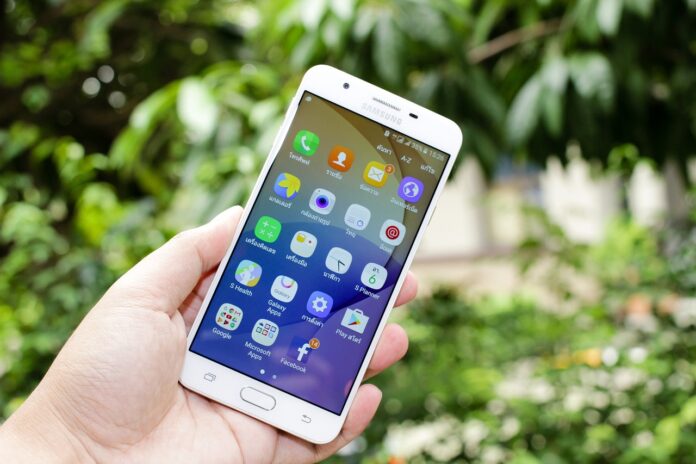Choosing the right Android phone can be overwhelming, especially with the sheer number of options available in 2025. From budget-friendly models to high-end flagships, each phone comes with its own set of features and specifications.
Display: Size, Resolution, and Refresh Rate
The display is one of the most critical aspects of a smartphone, as it directly impacts your viewing experience. Whether you’re scrolling through social media, watching videos, or gaming on platforms like GameZone, the quality of the display plays a significant role. A bigger screen can become beneficial to you trying to win your way in Tongits and other card games GameZone casino offers.
Size
- 6.0 to 6.8 inches: Ideal for most users, balancing portability and screen real estate. Larger screens are great for media consumption and multitasking, while smaller screens are more compact and easier to handle.
- Foldable displays: For those who want versatility, foldable phones like the Samsung Galaxy Z Fold 6 offer both compact and tablet-like experiences. These are perfect for users who need a larger screen for productivity but still want a pocket-sized device.
Refresh Rate
- 60Hz: Standard for basic tasks like browsing and social media. While it’s sufficient for most users, it may feel less smooth compared to higher refresh rates.
- 90Hz or 120Hz: Smoother scrolling and better gaming performance. These refresh rates are becoming standard in mid-range and flagship phones, providing a more fluid experience.
- 165Hz: Found in high-end gaming phones like the ASUS ROG Phone 7 for ultra-smooth visuals. This is ideal for gamers who want the best possible performance.
Processor and RAM: Performance Matters
The processor (CPU) and RAM determine how fast and efficiently your phone can handle tasks. Whether you’re multitasking, gaming, or using demanding apps, these specifications are crucial.
Processor
- Snapdragon 8 Gen 3: High-end chipset for flagship phones, offering top-tier performance. Found in devices like the Samsung Galaxy S25 and OnePlus 12, this processor ensures smooth performance even for the most demanding tasks.
- Google Tensor G4: Optimized for AI tasks and found in Google Pixel phones. This chipset is designed to enhance features like photo processing and voice recognition.
- MediaTek Dimensity 7300: Mid-range chipset, suitable for budget-friendly models. While not as powerful as flagship processors, it still offers solid performance for everyday use.
RAM
- 8GB: Adequate for multitasking and light gaming. This is the minimum you should consider for a smooth experience.
- 12GB or 16GB: Ideal for heavy multitasking, gaming, and future-proofing. If you plan to keep your phone for several years, opting for more RAM is a smart choice.
Storage: Capacity and Expandability
Storage determines how much data, apps, and media you can keep on your phone. With apps getting larger and media files taking up more space, having sufficient storage is essential.
Internal Storage
- 128GB: Sufficient for most users. This is the standard for mid-range and flagship phones, offering enough space for apps, photos, and videos.
- 256GB or 512GB: Recommended for heavy media users and gamers. If you take a lot of photos, download movies, or play graphic-intensive games, this storage capacity is ideal.
- 1TB: Found in premium models for extensive storage needs. This is perfect for users who want to store large files like 4K videos or high-resolution photos.
Battery: Capacity and Charging Speed
Battery life is crucial for ensuring your phone lasts throughout the day. With smartphones becoming more powerful, having a long-lasting battery is essential.
Capacity
- 4,000mAh to 5,000mAh: Standard for most phones, offering all-day battery life. This is sufficient for most users, but heavy users may need more.
- 5,500mAh or higher: Found in phones designed for heavy usage or gaming. These batteries ensure that you can use your phone all day without worrying about running out of power.
Cameras: Quality and Versatility
Cameras are a major selling point for many users, so it’s important to evaluate their specifications. Whether you’re a casual photographer or a professional, having a good camera is essential.
Main Camera
- 50MP or higher: Offers high-resolution photos with excellent detail. Found in flagship models, this ensures that your photos are sharp and clear.
- Wide-Angle and Telephoto Lenses: Provide versatility for different shooting scenarios. Wide-angle lenses are great for landscapes, while telephoto lenses are perfect for zooming in on distant subjects.
Selfie Camera
- 12MP or higher: Ensures clear and detailed selfies. This is the standard for most phones, but some models offer higher resolutions for even better quality.
- Dual Front Cameras: Found in some models for better depth and wide-angle selfies. This is perfect for users who take a lot of selfies or group photos.
Video Capabilities
- 4K Recording: Standard in most phones, offering high-quality video recording.
- 8K Recording: Found in high-end models for ultra-high-definition video. This is perfect for users who want the best possible video quality.
Software: Updates and Features
The software experience can significantly impact your phone’s usability and longevity. Having the latest software ensures that your phone runs smoothly and securely.
Operating System
- Android 15: The latest version, offering new features and improvements. This is the standard for new phones in 2025.
- Custom Skins: Samsung’s One UI, Google’s stock Android, and others add unique features but may affect performance. Choose a skin that suits your preferences.
Build Quality and Durability
A well-built phone ensures durability and a premium feel. Whether you’re prone to dropping your phone or just want something that feels solid, build quality is important.
Materials
- Glass and Metal: Common in flagship models, offering a premium look and feel. These materials are durable but can be slippery.
- Plastic: Found in budget models, lightweight but less durable. While not as premium, plastic phones are often more affordable.
Water and Dust Resistance
- IP67 or IP68 Rating: Ensures protection against water and dust. This is perfect for users who want a phone that can withstand the elements.
Connectivity: 5G and Beyond
Modern phones come with advanced connectivity options to keep you connected. Whether you’re streaming, gaming, or browsing, having fast and reliable connectivity is essential.
5G Support
- Sub-6GHz and mmWave: Ensures compatibility with all 5G networks. This is becoming standard in new phones, offering faster speeds and lower latency.
Additional Features
These extras can enhance your overall experience. While not essential, they can make your phone more convenient and enjoyable to use.
Biometric Security
- Fingerprint Sensor: Fast and secure unlocking. Found in most phones, this is a reliable way to keep your phone secure.
- Face Unlock: Convenient but less secure than fingerprint sensors. This is perfect for users who want a quick and easy way to unlock their phone.







